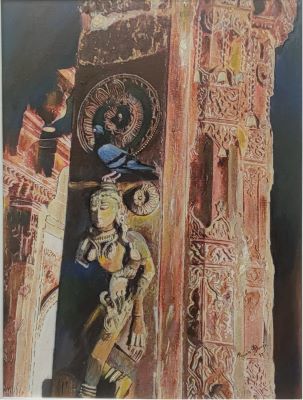Historical moment for India: Australia to return 14 sculptures

Another historical moment for India as the National Gallery of Australia has decided to return back 14 artworks worth million dollars
Priyanka Banerjee
India has been, since antiquity, remained the cultural hub of art, architecture and history. Once known as the golden bird, this majestic land is replete with cultural history where artistic wonders can be found everywhere and every corner holds countless and wonderful surprises. India is one of the richest nations in terms of antiquarian wealth. The opulent cultural heritage and antiquities are so inextricably intertwined in our social fabric that it attracted foreign invaders from different countries who plundered and vandalised our national wealth. It’s indeed tragic that we had to lose many gems our forefathers had possessed.
The big news is that the National Gallery of Australia, in its single largest repatriation of art, has decided to return another 14 artefacts to the Indian Government. This has spread happiness in these times of despair. Many articles were either stolen or removed illegally from India. As an art curator, I feel jubilant as the priceless artworks will enrich and adorn our cultural scene with their eternal beauty and historical significance. The plundered artworks worth $3 million which include paintings, sculptures, six photographs and a painted scroll will add to the wealth of our nation.
There are many sculptures and treasures still stacked abroad and some of them are Jagdamba – Shivaji’s sword, Tipu’s Tiger, Ring of Tipu Sultan, Ambika Statue, Royal jade wine cup of Shah Jahan, Maharaja Ranjit Singh’s throne, the Sultan Ganj Buddha, Amravati Marvel’s and Kohinoor Diamond.
Bringing back this lost wealth is a Herculean task for any government as there are impediments to these repatriation efforts. Greed, ignorance and corruption are some of the roadblocks. The smuggling activities of the eternal artworks gained momentum in the 1970s and 1980s because of greed in the minds of the people who wanted to sell off the priceless artworks at any cost. People were oblivious of the rich cultural heritage our forefathers had left behind and their significance in the cultural front. Small-time villagers or town folks sold off the antiquities to the foreign clients for peanuts not realising their worth and the subsequent harm they are doing to the nation. Thus, corruption becomes one of the key factors which is still prevalent in our society.
The Archaeological Survey of India (ASI) plays an important role in bringing back the plundered wealth. It prevents illegal exports of antiquities. Here the Indian Customs plays an important role by not exporting any suspicious container and instantly reporting to the ASI Law under 24 of the Antiquities and Art treasures Act 1972 takes legal measures against the culprits and brings them to books.
Incessant pursuit and perseverance for bringing back our nation’s plundered wealth by the Indian Government has finally yielded good results. In 2014, the US government had returned 200 artefacts to India. Although the steps taken by the present government are commendable, still a lot has to be done to bring back the plundered wealth stacked in the British Museum. According to historian William Dalrymple, most of the plunder was done by the then Bengal governor, Robert Clive. According to his words, “The riches include hookahs of varnish hold inlaid empurpled ebony, superbly inscribed Badakhshan spirals and jewelled daggers; gleaming rubies the colour of pigeon’s blood and scattering of lizard green emeralds.”
As an art curator, I feel exultantly proud and joyful about this historical moment when our long lost and plundered wealth returns back to our glorious nation and adds more glory and power to our cultural heritage. In short, it’s a cultural gift on our 75th Independence Day.
Banerjee is an art curator and art critic

